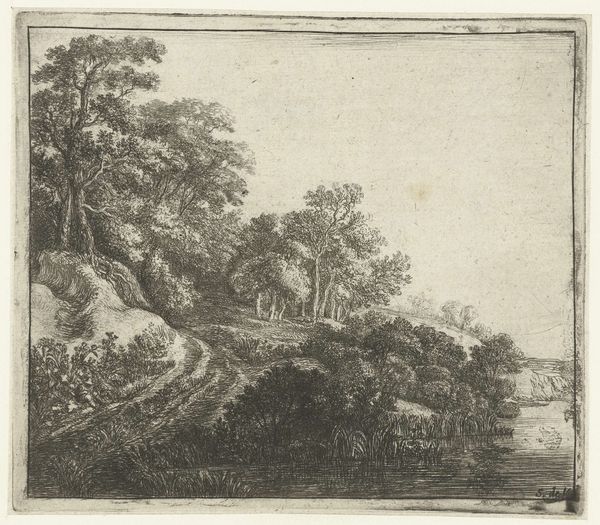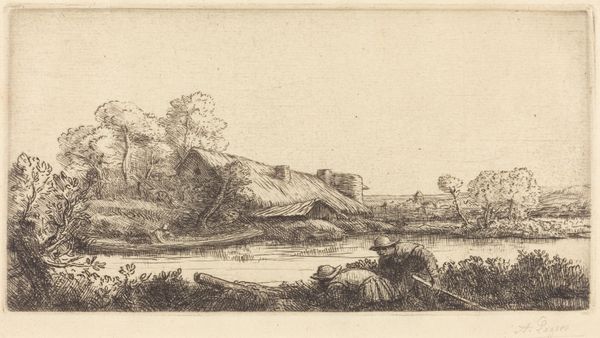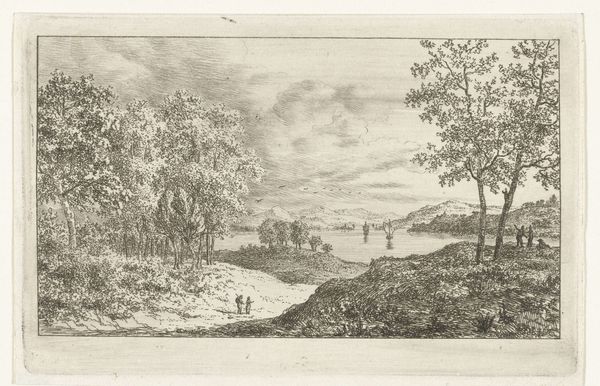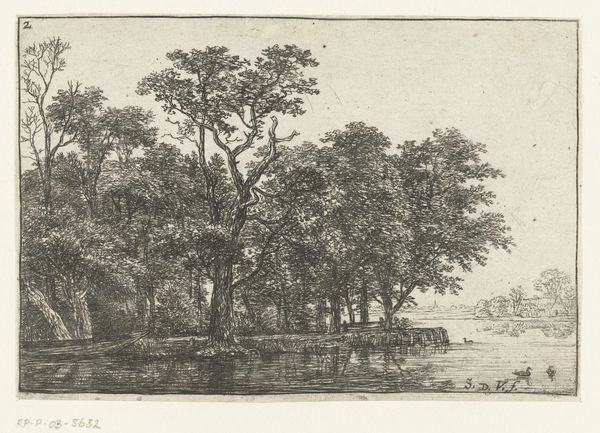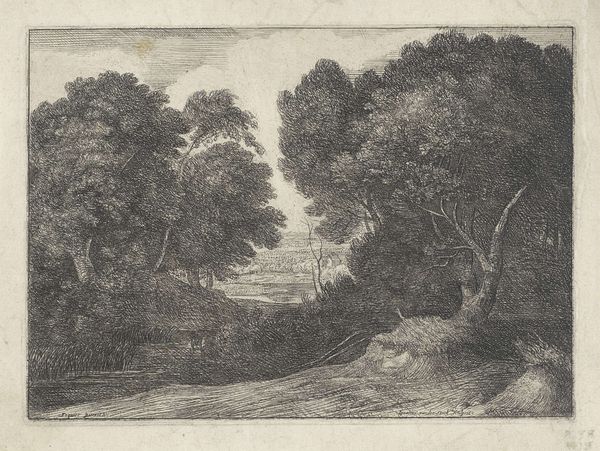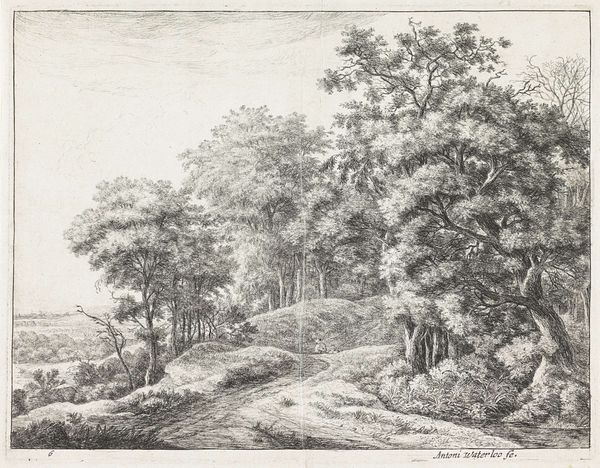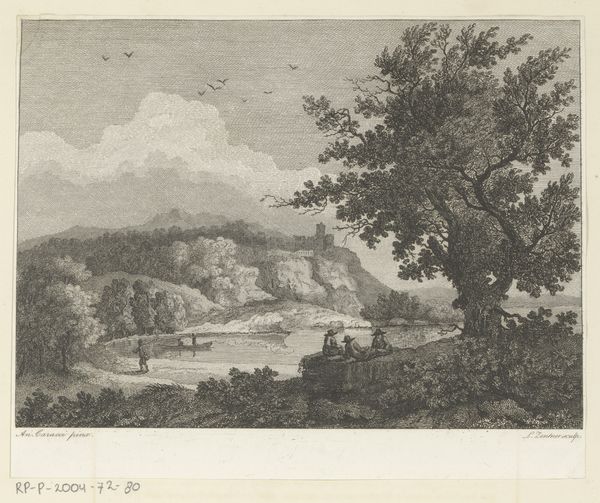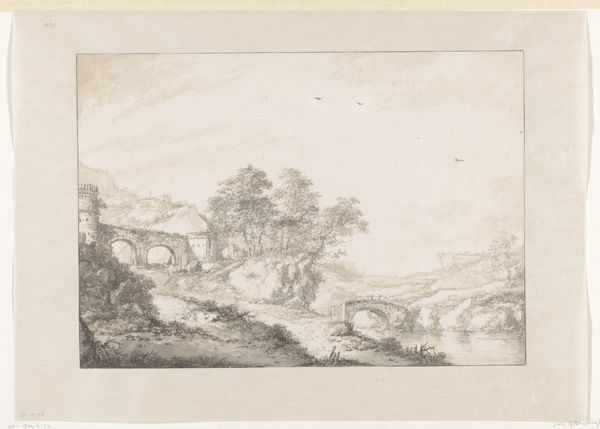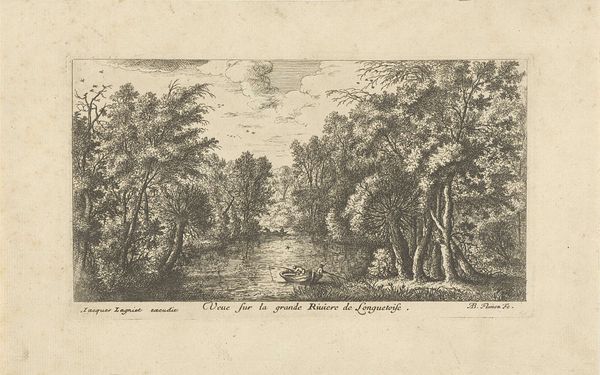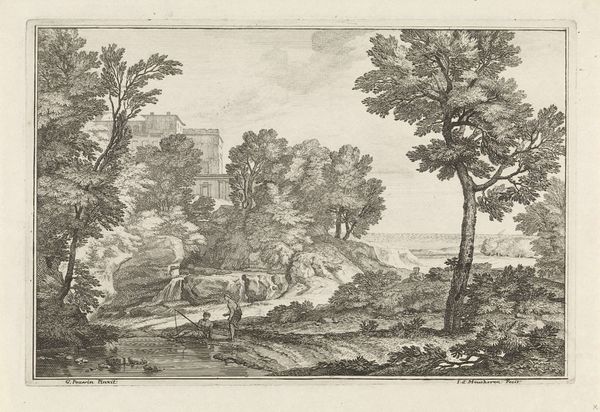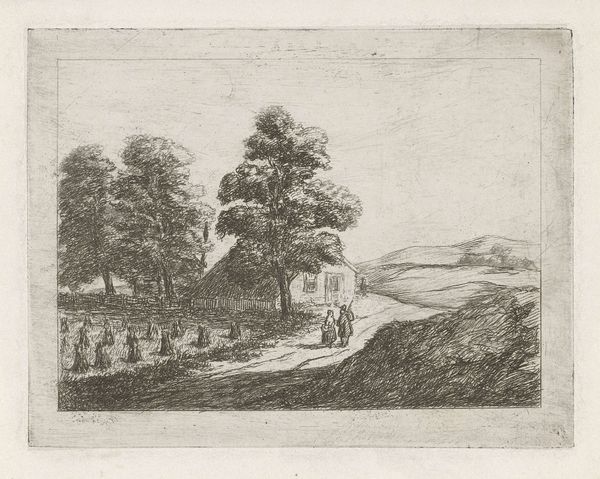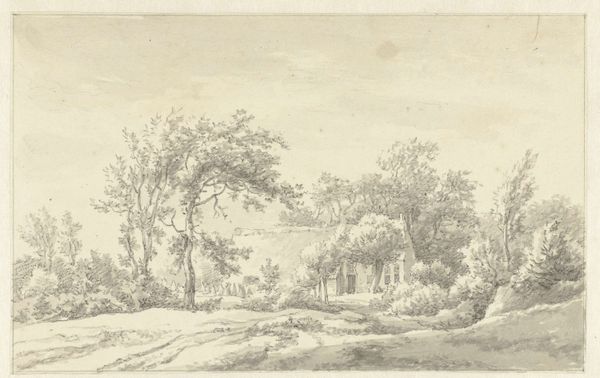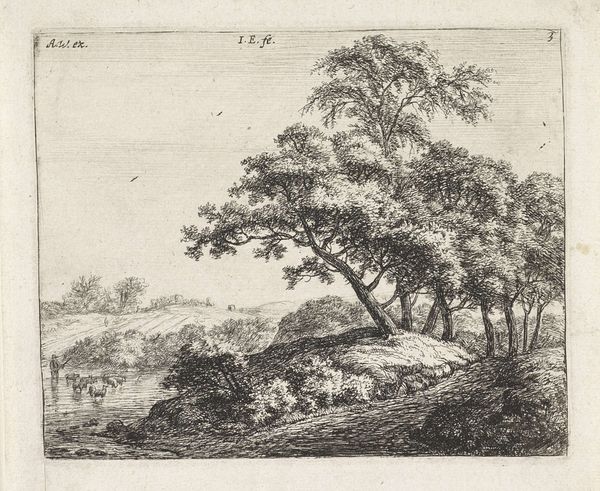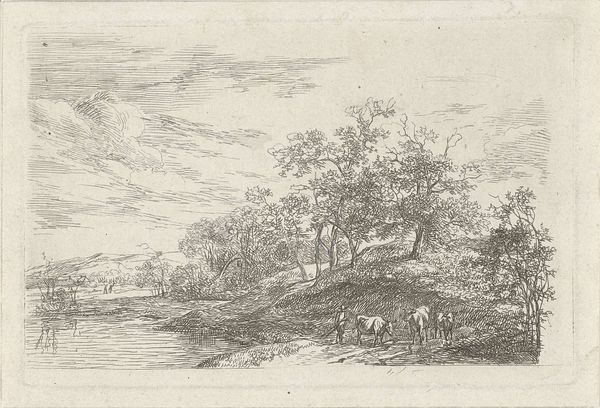
print, etching
#
lake
#
dutch-golden-age
# print
#
etching
#
landscape
#
road
#
forest
Dimensions: height 137 mm, width 156 mm
Copyright: Rijks Museum: Open Domain
Curator: Let's turn our attention to this understated yet compelling piece by Simon de Vlieger, "Heuvel met bebossing," dating from sometime between 1610 and 1653. It’s a landscape, rendered in etching, demonstrating a subtle mastery of light and shadow. Editor: It immediately evokes a sense of solitude and tranquility. The monochromatic palette focuses attention on texture – the dense foliage, the ripples on the water's surface, the worn path... there's an undeniable invitation to step into the scene. Curator: De Vlieger's place in Dutch Golden Age painting is interesting when considering landscape art, a field experiencing rapid popularization in the 17th century. The rise of a mercantile class creates a market, one no longer defined by commissions from the church or the aristocracy. What do we know about *who* he’s actually depicting? Editor: Well, the lack of idealization – no heroic figures or grand allegories – suggests a move towards representing the everyday. One might argue it democratizes the very idea of what's "worthy" of artistic representation. It prompts consideration for whose perspective is centered when nature is depicted, and to whose benefit. Curator: And it is meticulously detailed. De Vlieger truly captures the nuances of light playing on leaves and water, while also showing a common dirt path worn by the travel of common people through this area. The way he uses hatching to create depth and form, too...it's an impressive skill. I am very curious about his choices. Is it romanticism, or the rise of the Dutch burghers and their land? Editor: Maybe both, operating together. The romantic elements allow for reflection in nature, and the attention paid to the land elevates the connection to it, which at this point could very easily become associated with ideas of ownership, authority, and empire. It is vital to critically examine what we consider "peaceful" landscapes within the wider context of their creation, whose perspectives get centered, and at what cost. Curator: An important question to ask! Thinking about this artwork makes me realize just how constructed, how political, even seemingly objective landscape art can be. It pushes me to analyze what purpose the style itself plays in society. Editor: Agreed. It’s a good reminder to look beyond the initial impression of serenity and consider the deeper, sometimes obscured, layers of meaning embedded within such works.
Comments
No comments
Be the first to comment and join the conversation on the ultimate creative platform.
